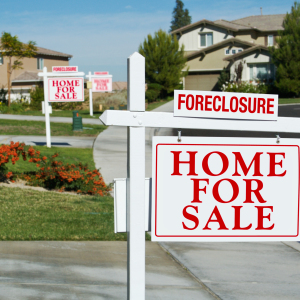If there were ever any doubt that the lesson of the financial crisis has not been learned, it was dispelled last month, when the six federal regulatory agencies charged by the Dodd-Frank Act with defining the terms of a high-quality prime mortgage backed away from the idea. Instead, they issued a final rule that equates a prime mortgage with a loan that has no minimum down payment and no required minimum credit score.
Unfortunately, this was no surprise. The original draft rule, proposed in 2011, had called for a substantial down payment and a solid credit score. This was met with an outcry from Congress, the realtors, and community activists, who claimed that a down payment greater than five percent would make it impossible for low-income and minority buyers to purchase homes. Amid the criticism, the draft rule was withdrawn and nothing was heard again until August of 2013, when the six agencies—the SEC, the Fed, and the FDIC among them—met with President Obama and shortly afterward announced that they had seen the light. They said then, in a preliminary draft rule, that they would be willing to abandon sound underwriting standards in favor of the loosened rules that prevailed in the 1990s and 2000s. Even so, they admitted in the release that mortgages with the standards they were proposing had a 23 percent rate of delinquency between 2005 and 2008.
The other shoe dropped in mid-October, in the form of a final rule. The agencies allowed that solid underwriting standards were “useful factors in determining the probability of mortgage default,” but they were concerned about “imposing potential additional constraints on mortgage credit availability at this time, especially as such constraints might disproportionately affect [low and moderate income], minority, or first-time home buyers.” Thus did sound underwriting standards take a back seat to the priority of increasing the sale of homes, especially for favored groups. This, recall, is from regulators whose first priority should be the stability of the housing market and the financial institutions that take mortgage risk.
Unfortunately, this was not the only recent indication of politically motivated policy-making in housing finance. In May 2014, Mel Watt, then the new director of the Federal Housing Finance Agency (FHFA)—the conservator and regulator of the government-sponsored enterprises (GSEs) Fannie Mae and Freddie Mac (and also one of the six agencies)—complained that when banks and other originators were making mortgages they were adding underwriting standards that were stricter than those Fannie and Freddie themselves demanded when they acquired mortgages. These additional credit requirements, he complained, “result in the rejection of many loans that would otherwise meet [GSE] credit standards.”
It’s no mystery why banks were adding these additional restrictions. Banks and other mortgage originators had just gone through a period in which Fannie and Freddie were demanding refunds for defaulted mortgages made during the housing bubble period. The GSEs claimed that these loans did not meet the standards embodied in the GSEs’ purchase agreements. In addition, FHFA had also sued many of the banks for allegedly violating the standards in the agreements with which the GSEs acquired private label mortgage-backed securities. Needless to say, the banks did not agree with these claims, but they have to deal with the GSEs, which are virtually the only buyers of mortgages today; the banks’ defense was to impose stronger underwriting standards to limit or eliminate such claims in the future.
So last month, Mr. Watt also announced that he is willing to make changes in the GSEs’ policies so that lenders will send them lower quality loans. He will limit the conditions under which Fannie and Freddie could seek refunds for mortgages that default, and he will allow down payments as low as three percent in mortgages that are sold to Fannie and Freddie. In other words, Watt is saying that the quality of the mortgages sold to the GSEs is not going to be a problem; FHFA just wants lenders to make the loans. Since the taxpayers are still standing behind Fannie and Freddie, it’s clear who will have to pay the bill when these mortgages default in the future.
As they say, you can’t make this stuff up. It’s only been a bit over six years since the great housing bubble collapsed and the subprime and other low-quality mortgages in the financial system at that time defaulted in unprecedented numbers, bringing on a financial crisis. Who was responsible for all those low-quality mortgages? The numbers make the case. In 2008, before the financial crisis, 56 percent of all the mortgages in the US—31 million loans—were subprime or otherwise low-quality. Of this 31 million, 76 percent were on the books of government agencies, primarily Fannie and Freddie. Obviously, it was the government that created the demand for these low-quality mortgages, but at the same time the government’s housing policies—particularly the affordable housing goals imposed on Fannie and Freddie—forced a sharp decline in underwriting standards.
The fact that the government is once more trying to reduce underwriting standards, in order to sell more homes, shows clearly that the lessons of the financial crisis are again being ignored. Taxpayers should ask themselves why they just stand by and let this happen.

